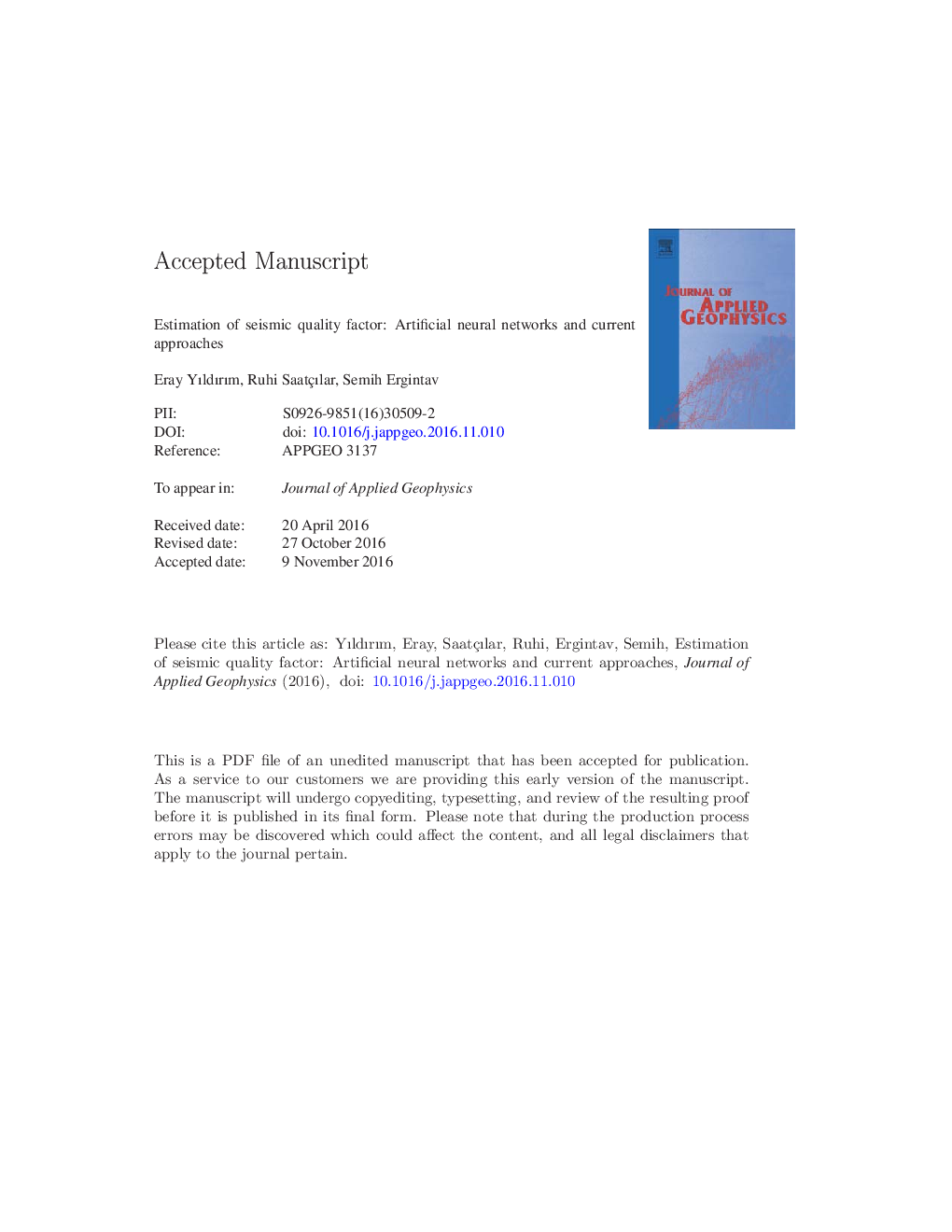| کد مقاله | کد نشریه | سال انتشار | مقاله انگلیسی | نسخه تمام متن |
|---|---|---|---|---|
| 8915593 | 1641115 | 2017 | 40 صفحه PDF | دانلود رایگان |
عنوان انگلیسی مقاله ISI
Estimation of seismic quality factor: Artificial neural networks and current approaches
ترجمه فارسی عنوان
برآورد ضریب کیفیت لرزه ای: شبکه های عصبی مصنوعی و رویکردهای جاری
دانلود مقاله + سفارش ترجمه
دانلود مقاله ISI انگلیسی
رایگان برای ایرانیان
کلمات کلیدی
موضوعات مرتبط
مهندسی و علوم پایه
علوم زمین و سیارات
فیزیک زمین (ژئو فیزیک)
چکیده انگلیسی
The aims of this study are to estimate soil attenuation using alternatives to traditional methods, to compare results of using these methods, and to examine soil properties using the estimated results. The performances of all methods, amplitude decay, spectral ratio, Wiener filter, and artificial neural network (ANN) methods, are examined on field and synthetic data with noise and without noise. High-resolution seismic reflection field data from Yeniköy (Arnavutköy, Ä°stanbul) was used as field data, and 424 estimations of Q values were made for each method (1,696 total). While statistical tests on synthetic and field data are quite close to the Q value estimation results of ANN, Wiener filter, and spectral ratio methods, the amplitude decay methods showed a higher estimation error. According to previous geological and geophysical studies in this area, the soil is water-saturated, quite weak, consisting of clay and sandy units, and, because of current and past landslides in the study area and its vicinity, researchers reported heterogeneity in the soil. Under the same physical conditions, Q value calculated on field data can be expected to be 7.9 and 13.6. ANN models with various structures, training algorithm, input, and number of neurons are investigated. A total of 480 ANN models were generated consisting of 60 models for noise-free synthetic data, 360 models for different noise content synthetic data and 60 models to apply to the data collected in the field. The models were tested to determine the most appropriate structure and training algorithm. In the final ANN, the input vectors consisted of the difference of the width, energy, and distance of seismic traces, and the output was Q value. Success rate of both ANN methods with noise-free and noisy synthetic data were higher than the other three methods. Also according to the statistical tests on estimated Q value from field data, the method showed results that are more suitable. The Q value can be estimated practically and quickly by processing the traces with the recommended ANN model. Consequently, the ANN method could be used for estimating Q value from seismic data.
ناشر
Database: Elsevier - ScienceDirect (ساینس دایرکت)
Journal: Journal of Applied Geophysics - Volume 136, January 2017, Pages 269-278
Journal: Journal of Applied Geophysics - Volume 136, January 2017, Pages 269-278
نویسندگان
Eray Yıldırım, Ruhi Saatçılar, Semih Ergintav,
